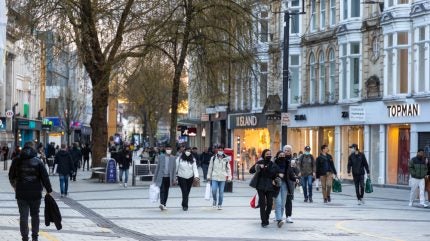
Retail sales volumes in the UK saw a slight decline of 0.3% in December 2024, according to the latest data from the Office for National Statistics (ONS). This follows a modest increase of 0.1% in November 2024, which was revised down from 0.2% in previous reports.
While the December drop signals ongoing challenges for the retail sector, certain categories such as clothing retail have shown signs of recovery.
The ONS report highlights that, despite a fall in supermarket sales, a rebound in non-food stores—including clothing and footwear retailers—helped offset the overall decline in retail sales.
The quarter-on-quarter comparison for Q4 2024 (October to December) revealed a larger drop of 0.8% compared to Q3, though sales rose by 1.9% when compared with the same period in 2023.
The slowdown in retail sales is compounded by broader economic pressures. Kris Hamer, Director of Insight at the British Retail Consortium, commented on the figures, noting:
“Retail sales picked up in December, but this unfortunately did not offset the shaky start to the ‘Golden Quarter’. In non-food, electricals, beauty and books made for popular presents. Meanwhile, sales of furniture and other large ticket items were hard hit as families continued to think twice before making larger purchases, and clothing and footwear sales remained muted.”

US Tariffs are shifting - will you react or anticipate?
Don’t let policy changes catch you off guard. Stay proactive with real-time data and expert analysis.
By GlobalDataRising costs and tax burdens threaten retail recovery
Despite this, Hamer pointed to certain positive developments, such as the increase in the purchase of smaller-ticket items like electricals, beauty products, and books during the festive season.
However, he also stressed the ongoing difficulties facing the retail sector, which is grappling with significant cost pressures.
“While retailers welcome this boost to sales, it will barely touch the sides of the £7bn in new costs from the Budget facing the industry in 2025. Higher employer national insurance contributions, higher National Living Wage, and a new packaging levy will heap pressure on an industry that is already paying more than its fair share of tax,” Hamer explained.
“With retailers doing all they can to absorb existing costs, two thirds of CFOs report they are left with little choice but to increase prices, and reduce investment in jobs and shops.”
The rise in the cost of doing business is reflected in the broader economic landscape, with increased operating costs forcing many businesses to rethink their strategies.
To mitigate the strain, Hamer emphasised the need for governmental action, particularly in terms of business rates reform: “Government must ensure that its proposed business rates reform does not result in any shop paying higher rates than they already do.”
Retailers are also bracing for the long-term effects of rising costs. As the new packaging levy and other tax-related increases come into play, the financial pressure on UK retailers is set to intensify.
Shifting consumer behaviours and rising costs
According to Hamer, while many retailers are striving to keep prices competitive, this will only become more challenging as new fiscal policies are introduced.
As 2025 begins, the UK retail sector faces a complex combination of shifting consumer behaviours and rising costs.
With ongoing pressures on both supply chains and the retail workforce, the future of retail sales in the UK may depend on how businesses adapt to these financial burdens and whether government policies can offer effective support.
Retail leaders will be hoping that the forthcoming business rates reform, alongside other industry-specific measures, will help cushion the impact of the rising costs and sustain the recovery witnessed in certain parts of the retail sector.



